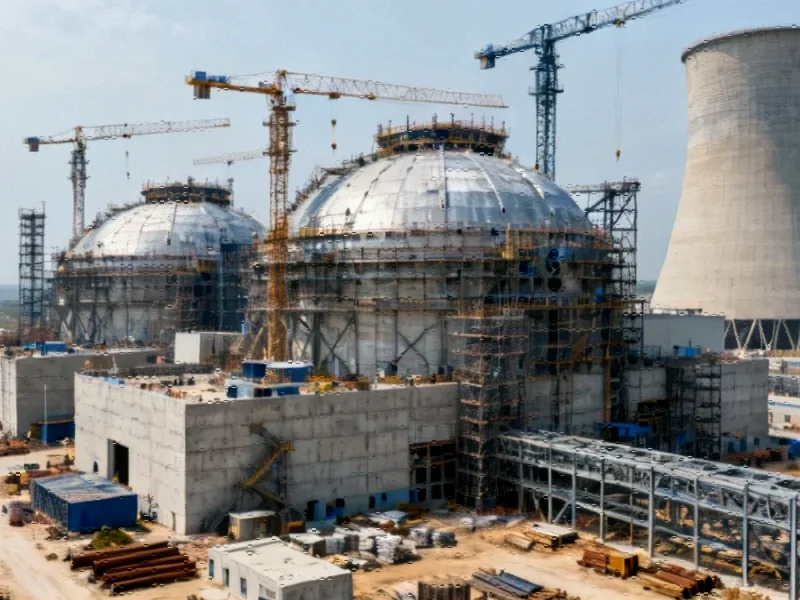The Evolution of Grid Resilience Through Battery Technology
As global energy systems undergo unprecedented transformation, battery energy storage systems (BESS) have emerged as far more than simple backup solutions. These sophisticated technologies are becoming the intelligent backbone of modern power infrastructure, enabling unprecedented levels of grid reliability while facilitating the integration of renewable energy sources at scale. The transition toward cleaner energy isn’t just about generation—it’s about creating a smarter, more responsive system that can adapt to fluctuating supply and demand patterns in real time.
Understanding the Multifaceted Role of BESS
Battery energy storage systems represent a paradigm shift in how we manage electrical grids. Unlike traditional power plants that generate electricity continuously, BESS function as dynamic energy reservoirs that can absorb excess power during periods of low demand and discharge it when needed most. This capability is particularly crucial for addressing the intermittency of solar and wind power, which has historically limited their reliability as primary energy sources.
The applications of BESS extend across multiple domains, from residential installations to utility-scale projects. These systems provide essential grid services including:
- Peak shaving: Reducing demand during high-usage periods
- Load shifting: Moving energy consumption to off-peak hours
- Frequency regulation: Maintaining grid stability
- Backup power: Ensuring continuity during outages
Current Challenges and Limitations
Despite their transformative potential, current battery storage systems face significant technical and economic hurdles. Most existing installations offer only two to four hours of storage capacity, which proves insufficient for prolonged periods of low renewable generation or unexpected demand surges. While developers are pushing for six- to ten-hour systems, the high capital expenditure often makes extended duration storage economically challenging.
Compounding these issues, the rapid deployment of renewable energy sources has outpaced transmission infrastructure development. This creates congestion in high-demand areas with limited transmission capabilities. Installing BESS in these constrained locations presents additional complications, as charging batteries adds to the existing load. Many promising projects have stalled when required infrastructure upgrades proved too costly for developers to undertake independently.
Technological Innovations Driving Progress
The industry is responding to these challenges with remarkable innovations across multiple fronts. Long-duration energy storage solutions capable of providing 12 to 100 hours of continuous power are moving from concept to commercialization. These extended duration systems represent a quantum leap in our ability to manage multi-day weather patterns that affect renewable generation.
Simultaneously, advancements in battery chemistry are addressing critical concerns around performance, safety, and environmental impact. Emerging alternatives to traditional lithium-ion configurations offer improved energy density, longer cycle life, and enhanced sustainability throughout the entire product lifecycle—from resource extraction to end-of-life recycling. These technological breakthroughs are reshaping what’s possible in energy storage while addressing legitimate concerns about resource scarcity and environmental footprint.
The Smart Grid Integration Imperative
Perhaps the most significant evolution in BESS deployment involves their integration with smart grid technologies. Advanced digital systems enable real-time monitoring, predictive analytics, and automated control that maximize the value of stored energy. Through Internet of Things (IoT) connectivity, sensors, smart meters, and sophisticated algorithms, utilities can optimize BESS operation to respond dynamically to grid conditions.
This intelligent integration represents a fundamental shift from static energy storage to responsive grid assets. The combination of BESS with digital infrastructure creates a symbiotic relationship where each enhances the capabilities of the other. Smart grids provide the data and control mechanisms that allow BESS to deliver maximum value, while BESS provide the physical infrastructure that enables smart grids to maintain stability amid increasing complexity.
Regulatory Frameworks and Market Structures
Technology alone cannot drive the BESS revolution—supportive regulatory environments and market structures are equally essential. Forward-thinking policies that recognize the multiple values provided by energy storage are critical for accelerating adoption. These include:
- Streamlined interconnection processes that reduce project development timelines
- Market mechanisms that compensate BESS for their grid services
- Standards and regulations that ensure safety and interoperability
- Research funding and demonstration projects that de-risk new technologies
As industry developments continue to evolve, regulatory frameworks must keep pace to create conditions where storage projects can thrive economically while delivering maximum grid benefits.
The Future Landscape of Grid-Scale Storage
Looking ahead, battery energy storage systems are poised to become the central nervous system of tomorrow’s power grids. Their role will expand beyond balancing supply and demand to include voltage support, black start capability, and enhanced resilience against both physical and cyber threats. The convergence of advanced automation with energy storage creates unprecedented opportunities for grid optimization.
The most significant transformation, however, may be in how we conceptualize grid architecture itself. Rather than designing systems around large centralized power plants, future grids will likely feature distributed networks of storage resources that work in concert to maintain stability. This distributed approach enhances resilience by eliminating single points of failure while enabling more efficient use of transmission infrastructure.
As highlighted in recent market trends, the integration of digital technologies with physical infrastructure is becoming increasingly critical across multiple sectors. The energy storage industry exemplifies this convergence, where software intelligence and hardware capability combine to create systems greater than the sum of their parts.
Conclusion: Storage as the Cornerstone of Energy Transition
Battery energy storage systems have transcended their original role as ancillary grid components to become fundamental enablers of the renewable energy transition. Their ability to decouple energy generation from consumption addresses the core challenge of intermittent renewables while providing multiple grid services that enhance reliability, efficiency, and resilience.
The continued evolution of BESS technology, particularly through battery storage systems transforming grid stability, demonstrates how innovation can overcome seemingly intractable problems. As costs decline and capabilities expand, these systems will play an increasingly central role in creating the flexible, adaptive energy networks required for a sustainable future. The journey toward grid modernization is complex, but with continued technological advancement and supportive policies, battery energy storage systems will undoubtedly light the way forward.
This article aggregates information from publicly available sources. All trademarks and copyrights belong to their respective owners.
Note: Featured image is for illustrative purposes only and does not represent any specific product, service, or entity mentioned in this article.



